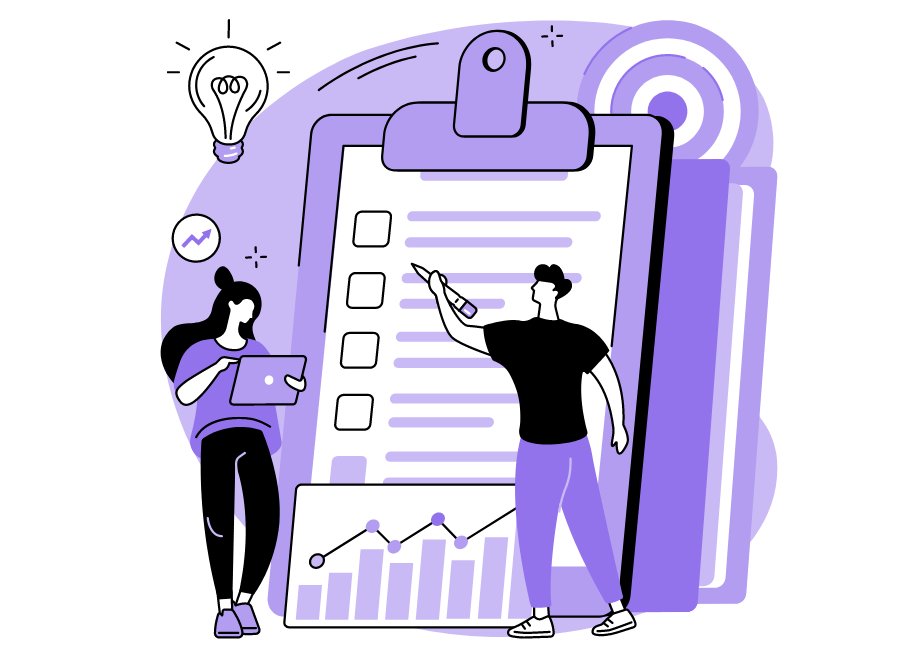
Imagine you and your employees never speak outside of status updates; imagine your sole communication with them revolves around a project’s progress.
You don’t know their career aspirations, satisfaction levels, or even their thoughts on the project you’re discussing.
Such an estranged, distant relationship is hardly going to facilitate collaboration between the two of you.
This is where 1:1 meetings come in – they are your chance to discover all of the above and more.
This article will walk you through all the particularities of holding an effective 1:1 meeting, so you can truly connect with your developer.
Table of Contents
What Are 1:1 Meetings
A 1:1 meeting is a meeting you’ll hold with your developer – only one developer.
Unlike team meetings, these meetings are private and confidential; they’re designed to cultivate the connection between you and your employee.

Get unreal data to fix real issues in your app & web.
Although business is obviously the main topic, a 1:1 is also an opportunity to inquire about your team member’s general well-being and see if you can support them in any way.
A manager summarized their approach to 1:1 meetings in a recent Microsoft survey:
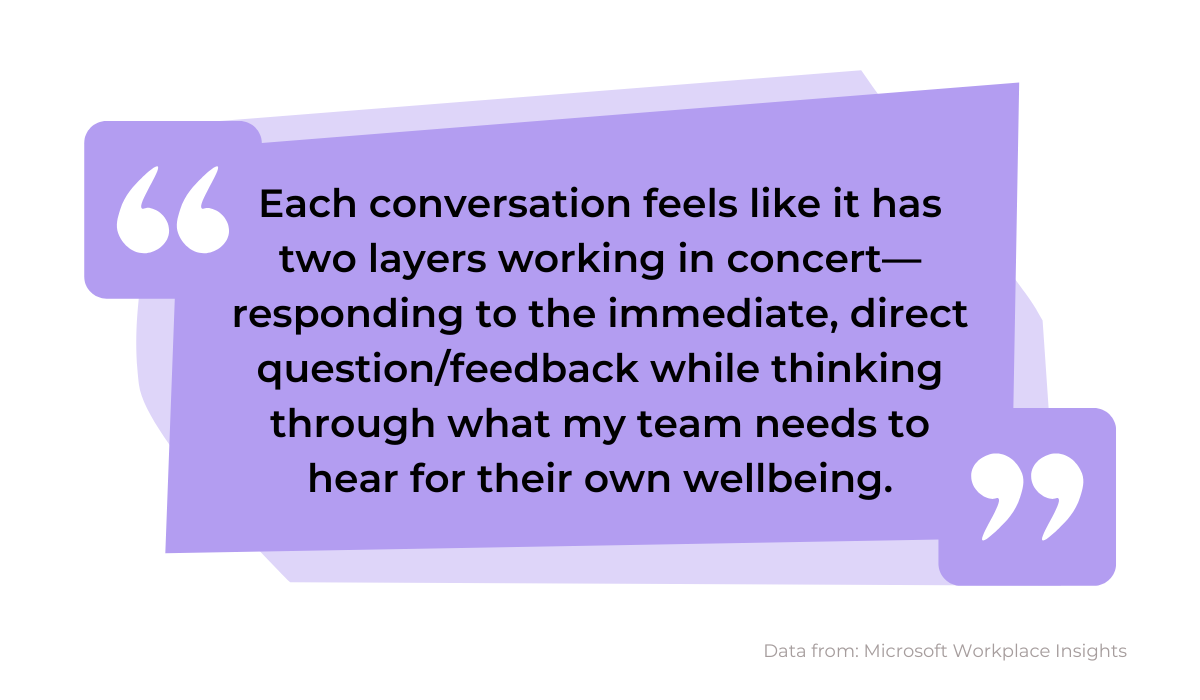
1:1 meetings are equally concerned with employees’ professional environment and personal wellbeing. As a result, they’re often referred to as the cornerstone of good management.
Why Are 1:1 Meetings With Developers Important
1:1 meetings are the best environment for getting to know your employees.
The honest, attentive nature of the conversation will strengthen the bond between you and your developer, and they should feel comfortable expressing their true thoughts.
If your developer sees your attempts to assist and understand them, they will, in turn, become more motivated in their work. Their engagement should then skyrocket, as studies have proven:
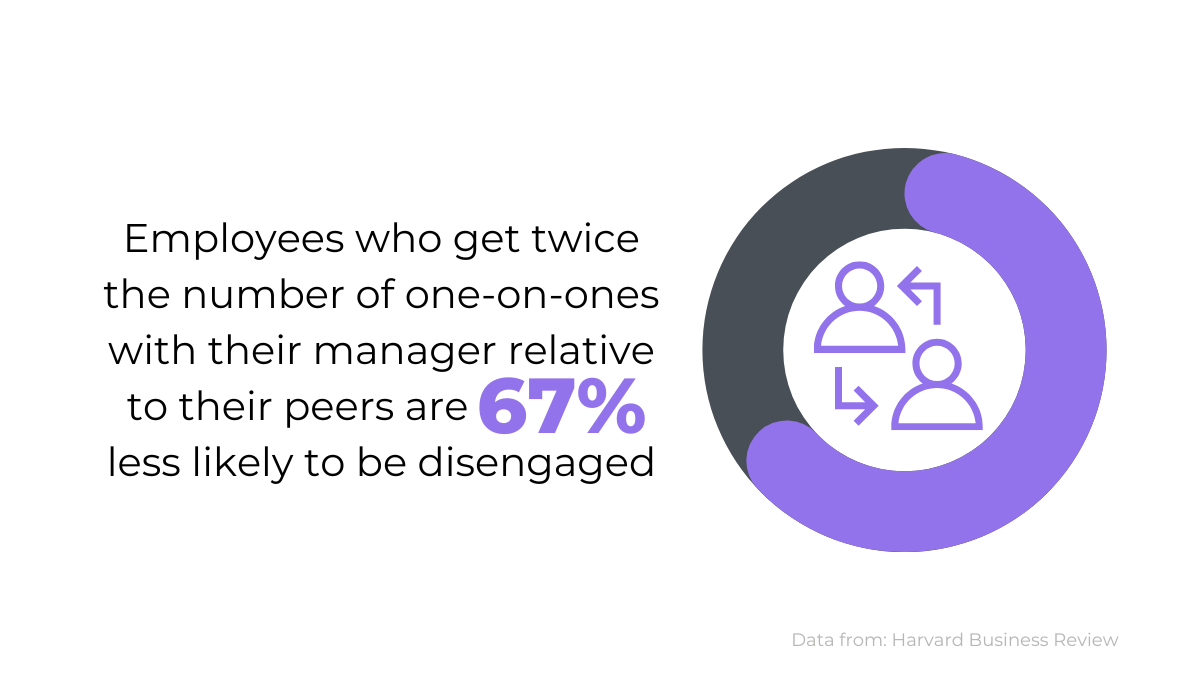
In a 1:1 meeting, you can talk openly with your developer about their satisfaction with the company, their thoughts, concerns, and positive and negative experiences.
It’s your chance to lend them your full support.
Giving Feedback
A 1:1 meeting is an ideal opportunity to provide your developers with feedback. This is sorely needed, as research has shown that employees aren’t receiving enough input from managers:
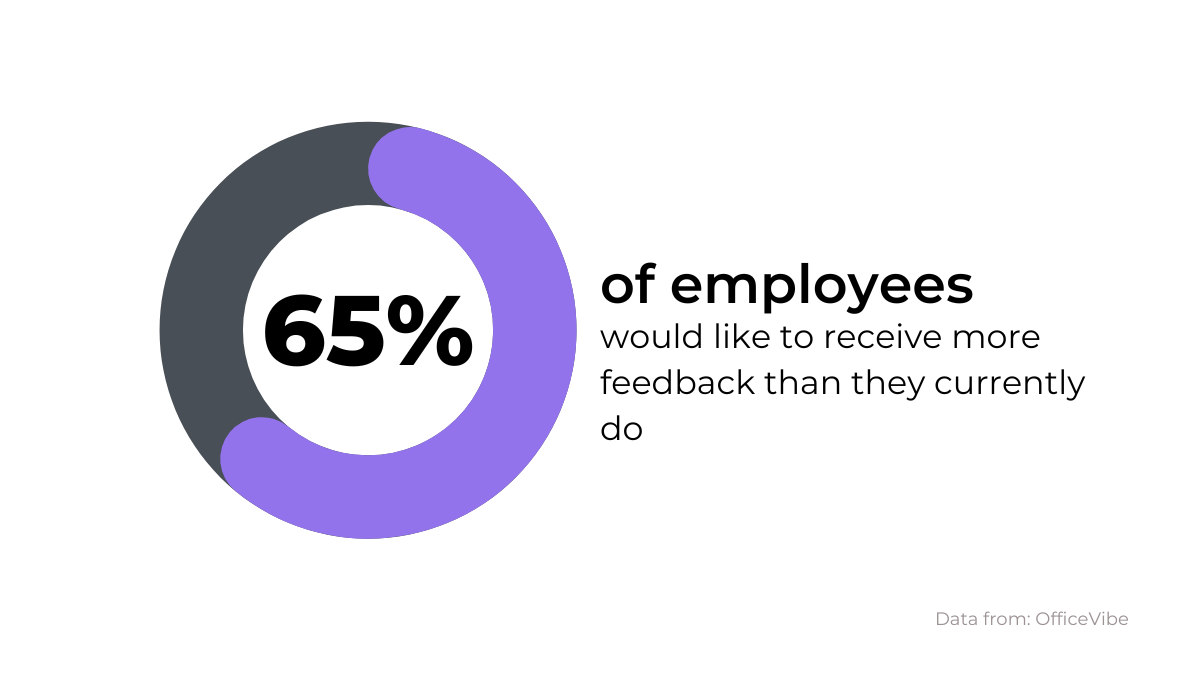
Employees are clearly starving for feedback; take advantage of 1:1 meetings to give them some.
Of course, don’t just bombard your developers with negative criticisms.
It’s better to start with positive feedback; congratulate them on their recent bug fix or their job well done mentoring the newest hire.
Tell your developer what they’ve been doing well, and encourage them to keep up the good work. Knowing they’re working well will increase their productivity and motivation.
Afterward, calmly move on to constructive criticism; let your developer know how they can improve.
It shouldn’t be that scary, as studies indicate that employees welcome negative feedback.
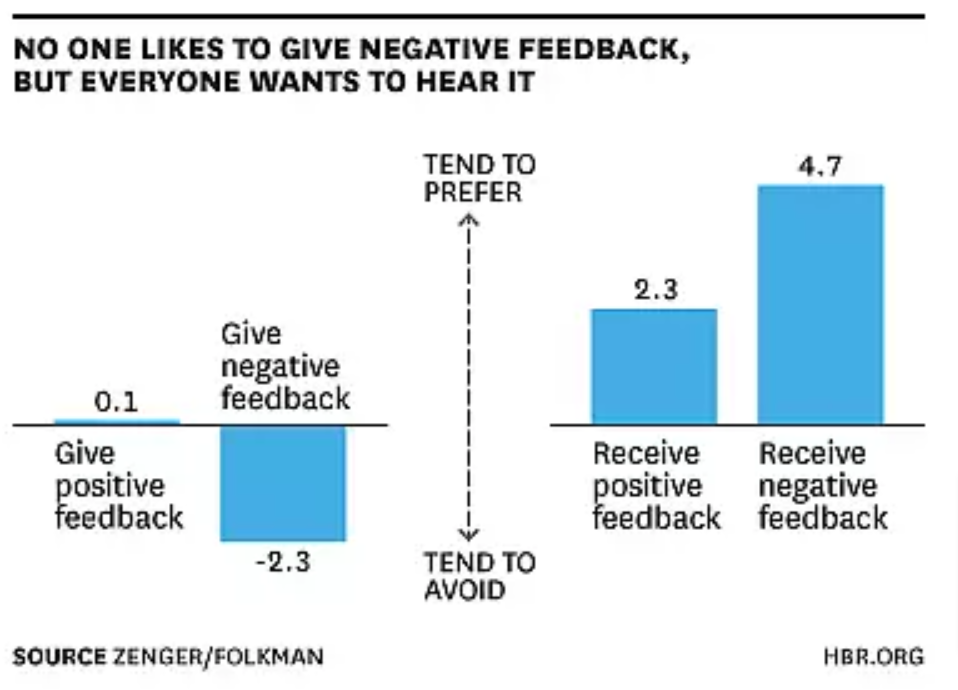
Unsurprisingly, employees aren’t shying away from constructive criticism.
Think of it this way – if negative feedback is appropriately delivered, it’s actually a developer’s most helpful asset.
Criticism will help your developer improve professionally, meaning you’re assisting them in advancing their career.
The key is in your delivery. Don’t grumble about sloppy code; instead, diplomatically explain their architectural solutions could be more elegant.
This type of constructive feedback will improve your developer’s job performance as they advance their knowledge.
Building Trust
1:1 meetings shouldn’t be clinical lists of your developer’s achievements and failures. Instead, they should sincerely discuss their feelings and experience at the company.
Your team member should trust you – they should be comfortable openly sharing their true thoughts, knowing you’ll act in their best interest.
Having a reputation as a trustworthy manager is worth its weight in gold, as a recent study revealed:

If your team members trust you, they’re more likely to voice their concerns, and you can reach a solution together.
This trusting communication then improves employee satisfaction and will increase retention rates.
However, verbal communication is only part of the puzzle.
To effectively build trust, you’ll also have to pay attention to nonverbal communication; research has shown that this makes up the bulk of communication:
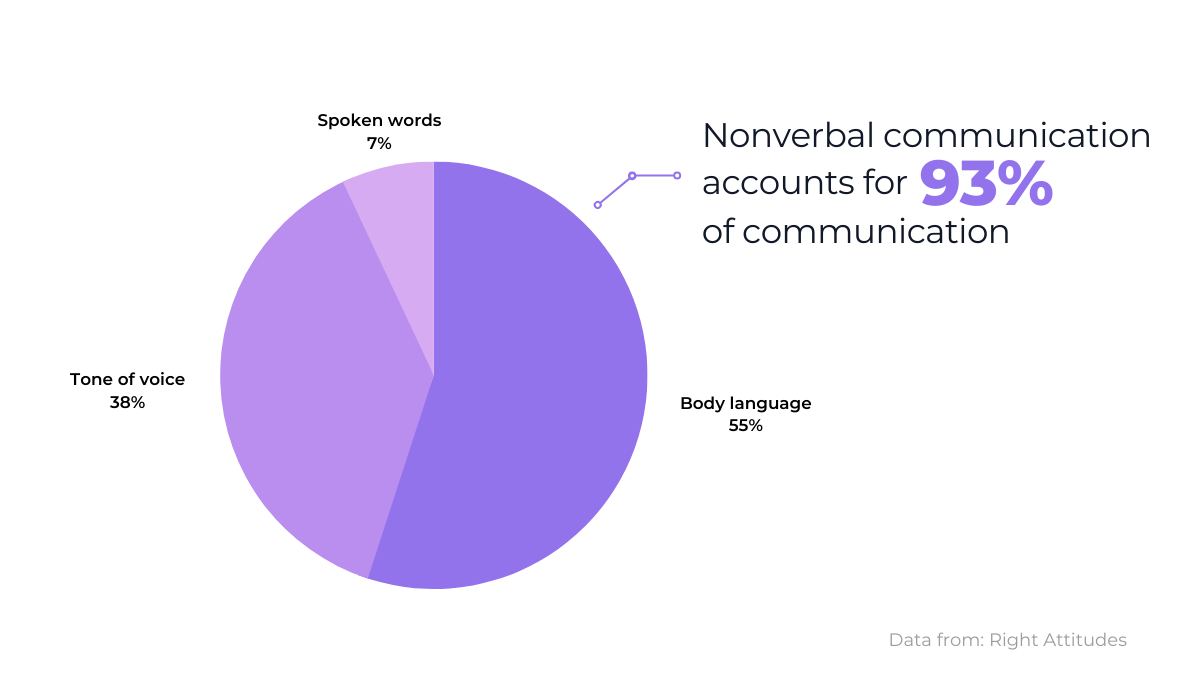
Body language is the most crucial element in communication. When hosting your 1:1s, make your body language welcoming.
Don’t look at your developer’s shoes; look your team members in the eye when speaking. This will convey your honesty and build trust.
Similarly, keep your posture relaxed – you don’t want to sit ramrod-straight. By leaning back in your chair, you’re communicating that this is a casual, supportive environment.
No one’s in trouble; the two of you are simply having a sincere, collaborative conversation.
Talking About Career Development
No one wants to stay in the same role indefinitely; it’s normal and human to strive to improve oneself consistently. Your developers aren’t any different.
They’re also probably eager to advance, and a 1:1 meeting is the perfect opportunity to discuss these topics.
Avoiding discussions about career development will only result in employee resentment, as recent studies have shown:
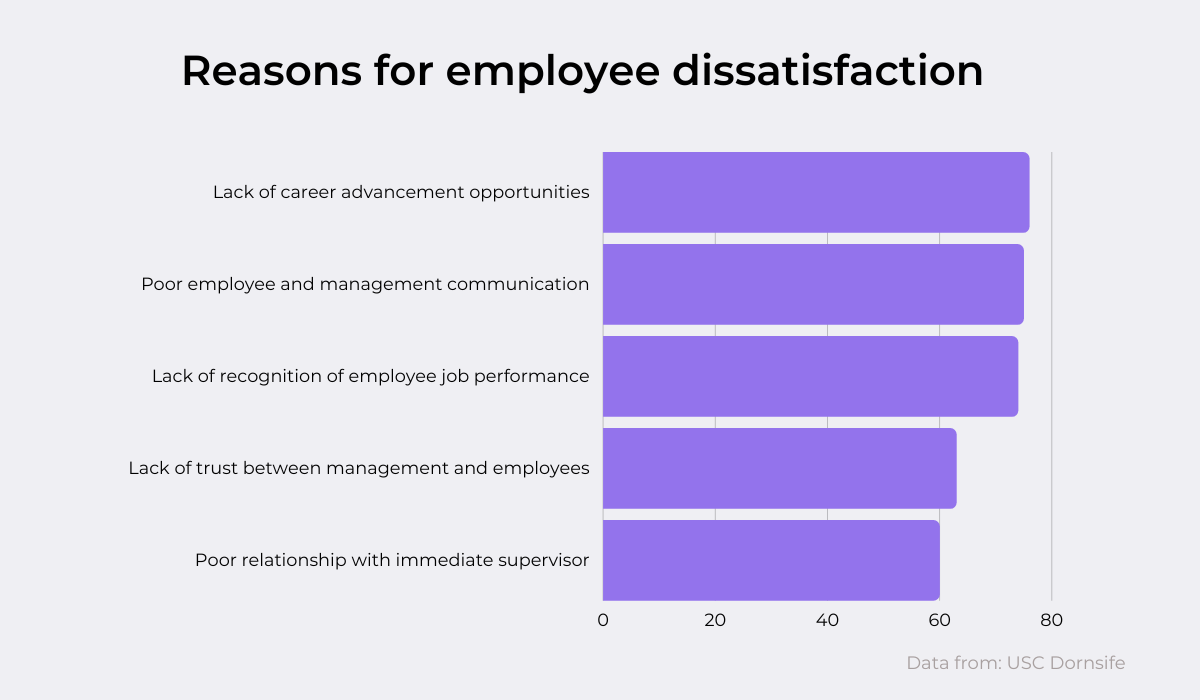
A lack of career development opportunities is one of the main reasons employees are dissatisfied at the workplace. Don’t let this happen to your developers.
Instead, take advantage of the private nature of a 1:1 meeting to ask about their career aspirations.
Don’t be shy; encourage your team members to speak frankly and openly, so you can give them your honest opinion and support them toward their goals.
For example, if your developer would like to progress towards a senior or lead developer role, use the 1:1 meeting to plan a roadmap for the promotion.
Tell your developer what milestones they’d need to reach to guarantee such advancement.
A Reddit user offered similar advice in a recent thread:

As per this engineer’s input, 1:1 meetings are the perfect opportunity to discuss career progression.
Utilize the time to brainstorm with your developers about what steps to take to further their careers.
How to Run Effective 1:1 Meetings With Developers
Having established how 1:1 meetings can benefit your employee and the company, it’s time to put the theory into practice. How exactly to organize a 1:1 meeting?
Browyn Smith, Senior Vice President of Operations at Ada, reveals how not to organize one:

The worst possible outcome is if your 1:1s turn into bland, uninspiring status reports. Luckily, you can employ a few tactics to avoid such an outcome.
Don’t take your 1:1s lightly; make time for them, and treat them as seriously as you would any other meeting. Your employees will appreciate it and thank you for it.
Create a Meeting Agenda
The first step to an effective 1:1 meeting is a plan; otherwise, you could forget to bring up an important topic.
Therefore, ensure you have a list of conversation points. In other words, prepare a meeting agenda.
For example, you don’t want to spend the meeting discussing only priorities and goals and neglecting your developer’s wellbeing. Here’s a sample agenda that covers all three topics:
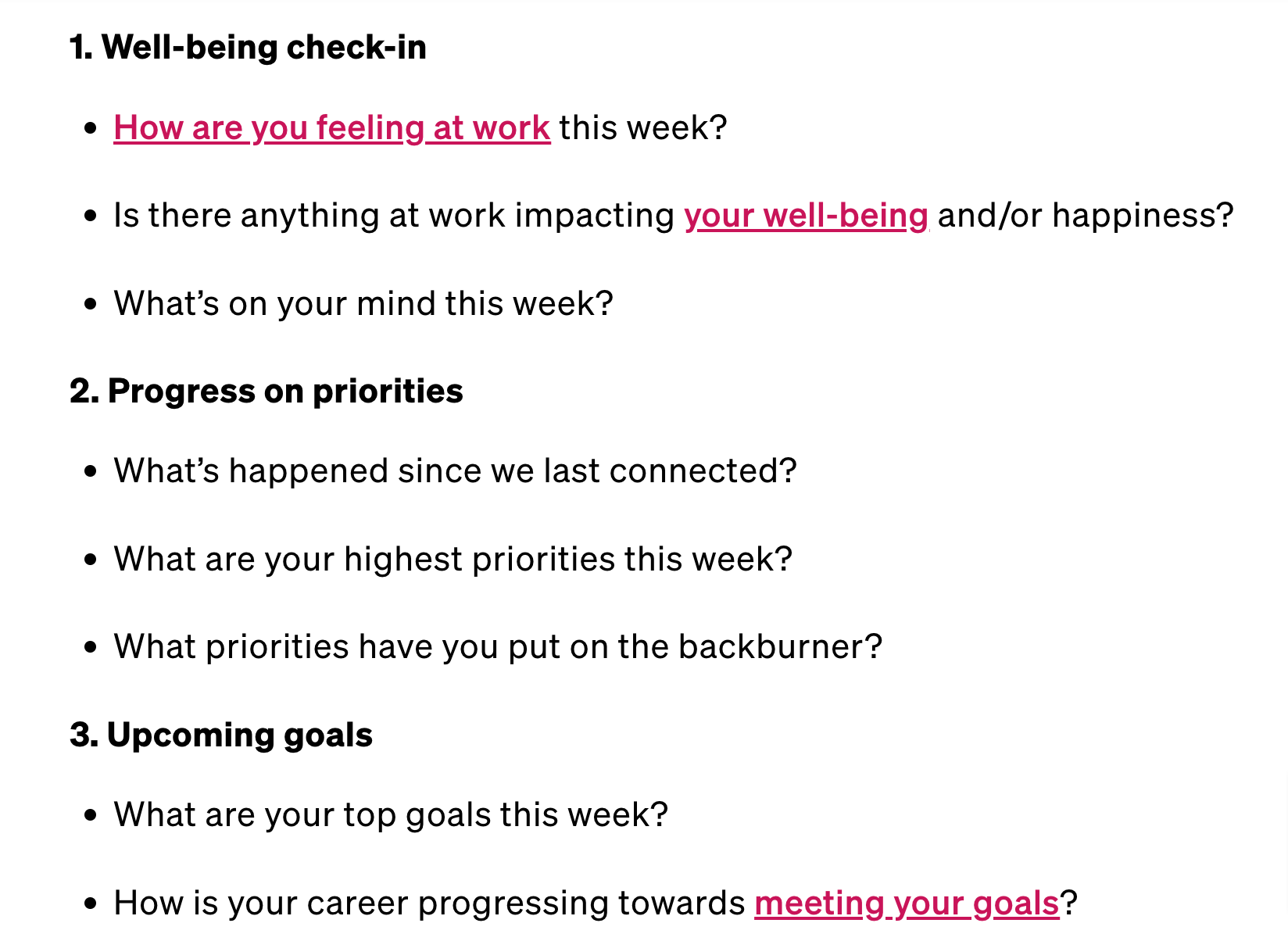
With this agenda, you’ll discuss everything you need, so – there’s no chance of missing anything.
Design the agenda in a way so that you have a few ‘main’ themes, and write at least two questions per theme.
That way, if the conversation lags, you have the resources to start it back up again.
When preparing your agenda, you’ll want to delve into as much detail as possible. Fortunately, there are online tools to help you out.
Waydev summarizes your developer’s work, visualizing work patterns and progress. You can see an example below:
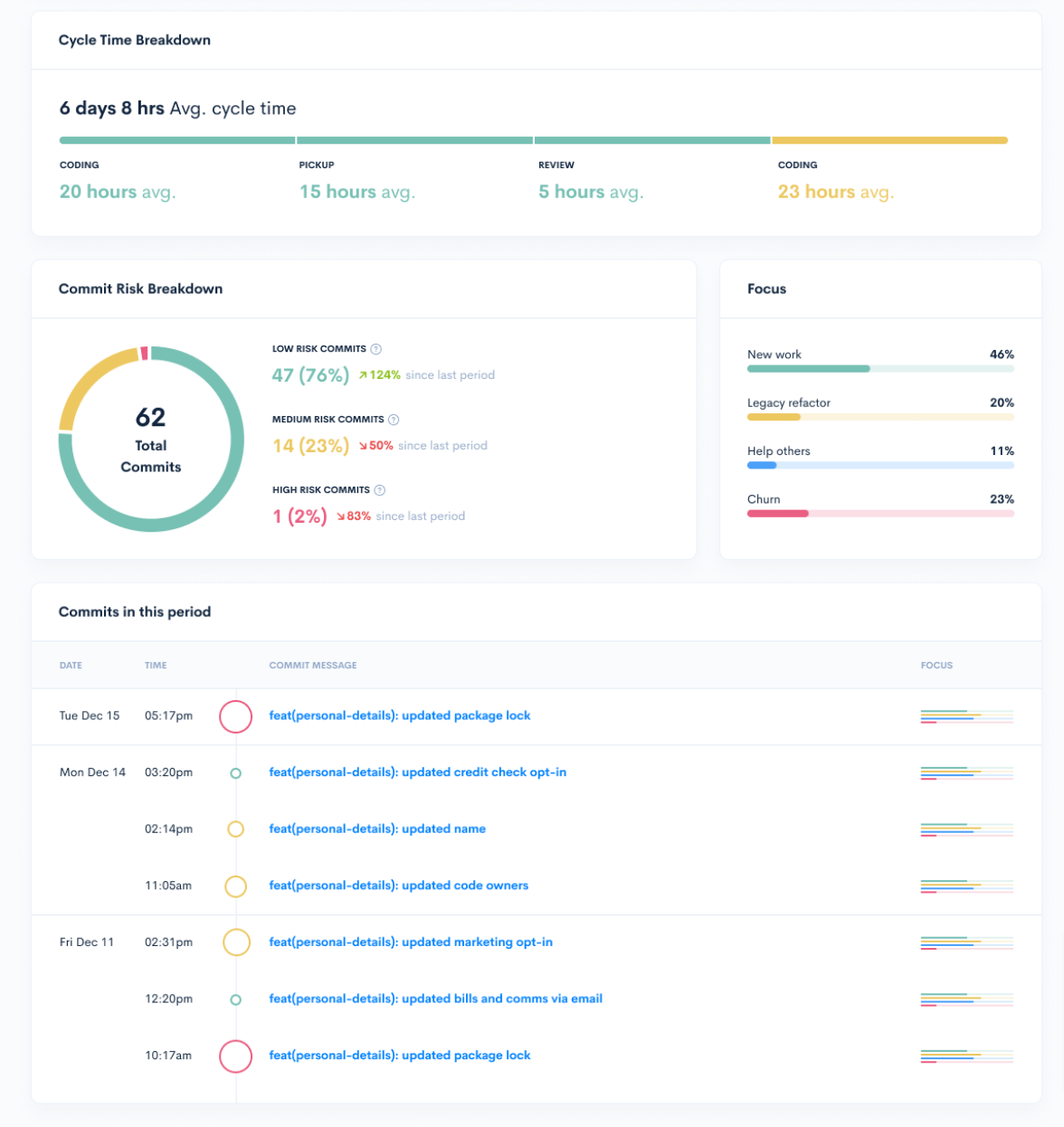
With such a detailed report, you’ll have an excellent base for organizing your meeting agenda.
Looking at this example, this particular developer is focused on new work and helps others the least.
You can then allocate some time on your agenda to discuss this to see if they’re happy with such an arrangement or if they’d prefer a more collaborative role.
Adjust the Length of the Meeting
When determining the length of your 1:1 meeting, don’t automatically shoebox it into a 30-minute timeslot; assess the situation realistically.
If your developer is satisfied at the workplace and progressing with their projects, you can probably conclude the meeting in 15 minutes. Why prolong needlessly?
On the other hand, one developer might have blockers on a task and no clear career progression path.
With that employee, don’t end the meeting without discussing everything on their mind. As a manager, you must support all your team members, however long it takes.
As per a Harvard Business Review article, each employee requires a different approach:
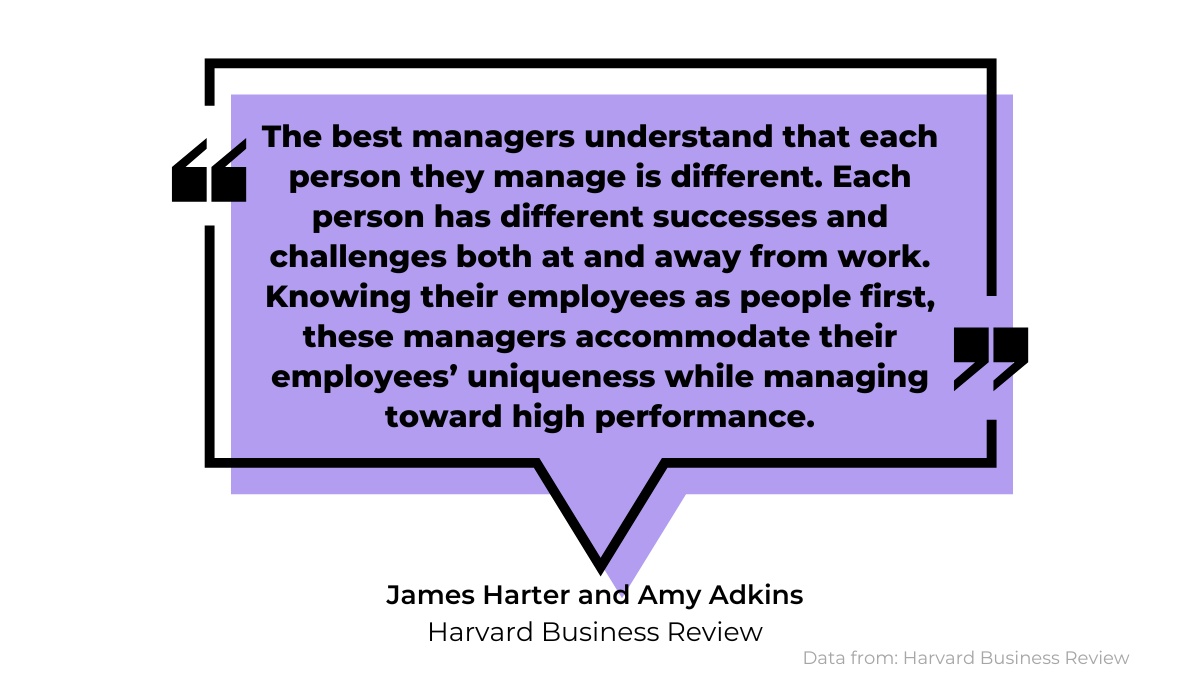
Remember to treat each developer individually, depending on what needs to be discussed and how extensively.
One way to quickly gauge how much time a 1:1 will take is to use Clockify. A time-tracking app, this tool creates a calendar for blocking off time for meetings.
Then, once the session begins, you can start a timer and see how long the meeting actually takes.
You’ll end up with a comparison of the meeting’s estimated time and how long it actually took. There’s an example below:
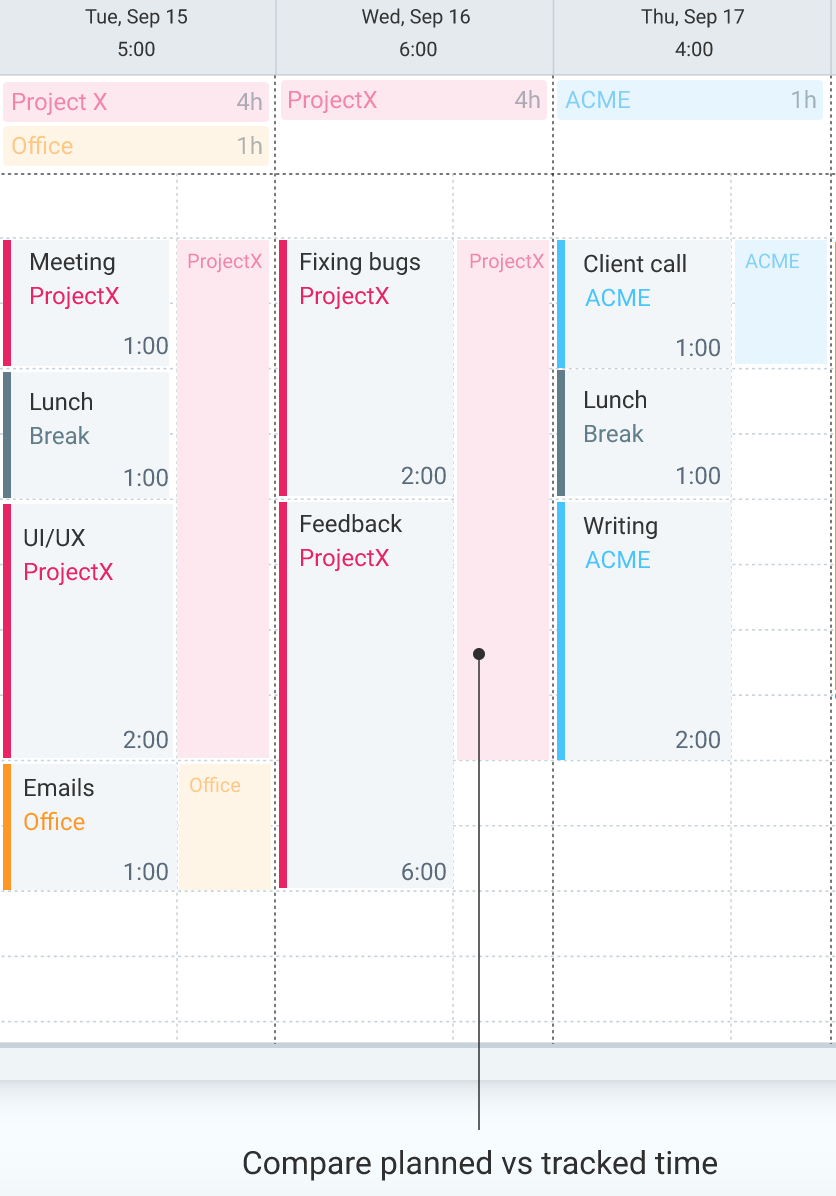
With this tool, you’ll get an exact report of how much time you spent in a 1:1 and how much time you should reserve next time.
Start the Meeting with a Win
Every developer likes to hear they’re working well. They’ll be glad you recognize their accomplishments, which should help them stay motivated.
Therefore, do your best always to start the meeting with a win.
Furthermore, beginning with some happy news tells your developer that you’re here for them. A 1:1 meeting should be a supportive environment dedicated to improving workplace satisfaction.
By starting positively, you’ll communicate that you’re not here to scold anyone. Instead, you want to assist as much as possible.
Hector LaMarque also encourages this type of behavior:
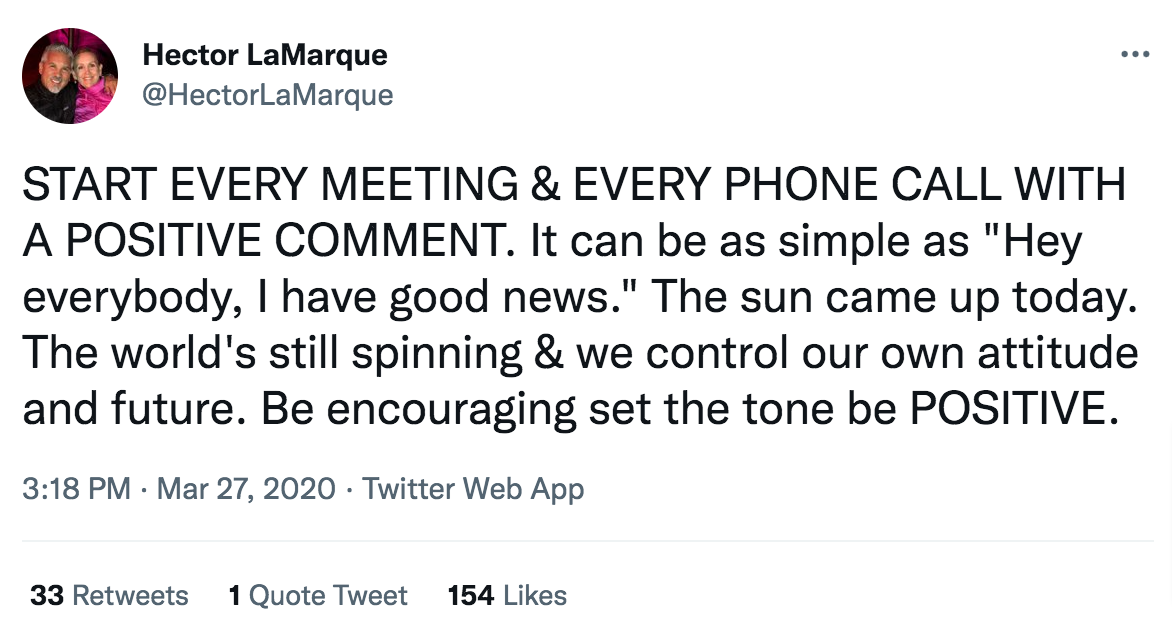
If you start with a win, your team members will feel acknowledged; they’ll realize that you’re here to encourage them and see them as more than just cogs in a machine.
Even if your team didn’t perform well last week, do your best to find something you can praise your employee for.
If you missed a deadline but your developer debugged one codebase, congratulate them.
Forget about the new features you need to add. Instead, thank your developer for solving the technical debt.
Always find something good to say; you can use Google’s stance on goals as inspiration.
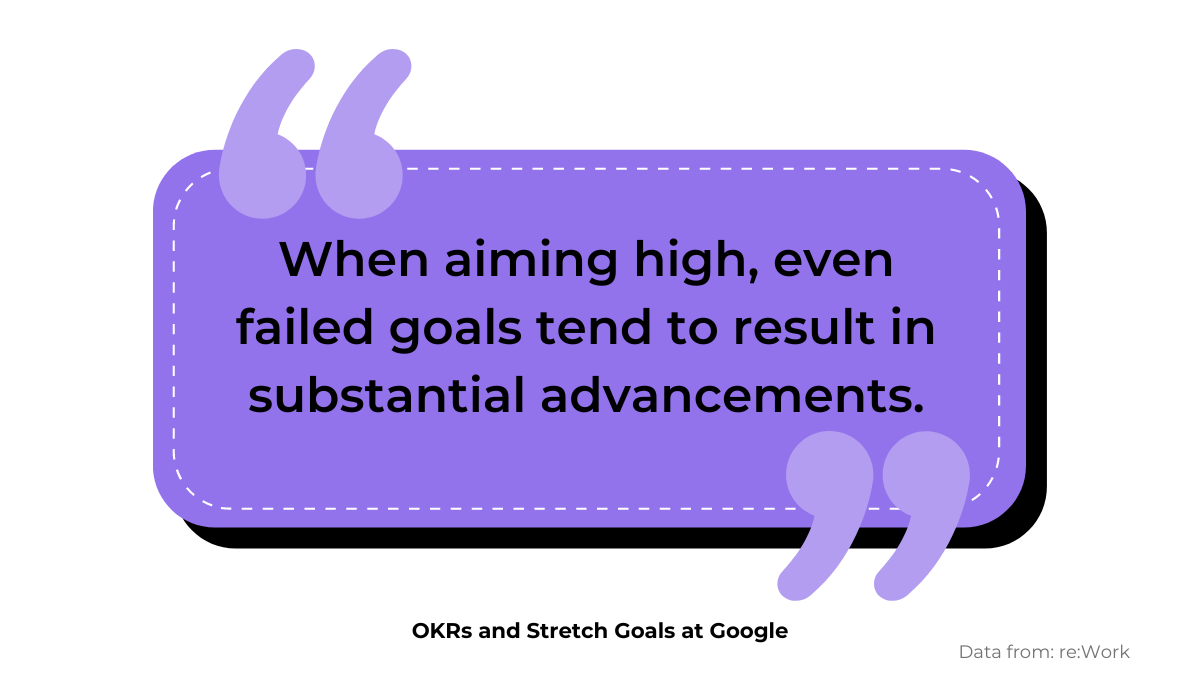
There’s not much chance of your team not doing anything right. Even if you’re behind on a major objective, acknowledge your developers for what they did correctly.
Identify Improvement Opportunities
As mentioned before, a 1:1 meeting is about your developer; you should focus on supporting them however you can.
As such, these meetings are an excellent environment for discussing what can be improved and worked on.
By providing constructive criticism and coaching your employee, they should feel encouraged to advance their skills further.
Take a look at the stats below to see for yourself:
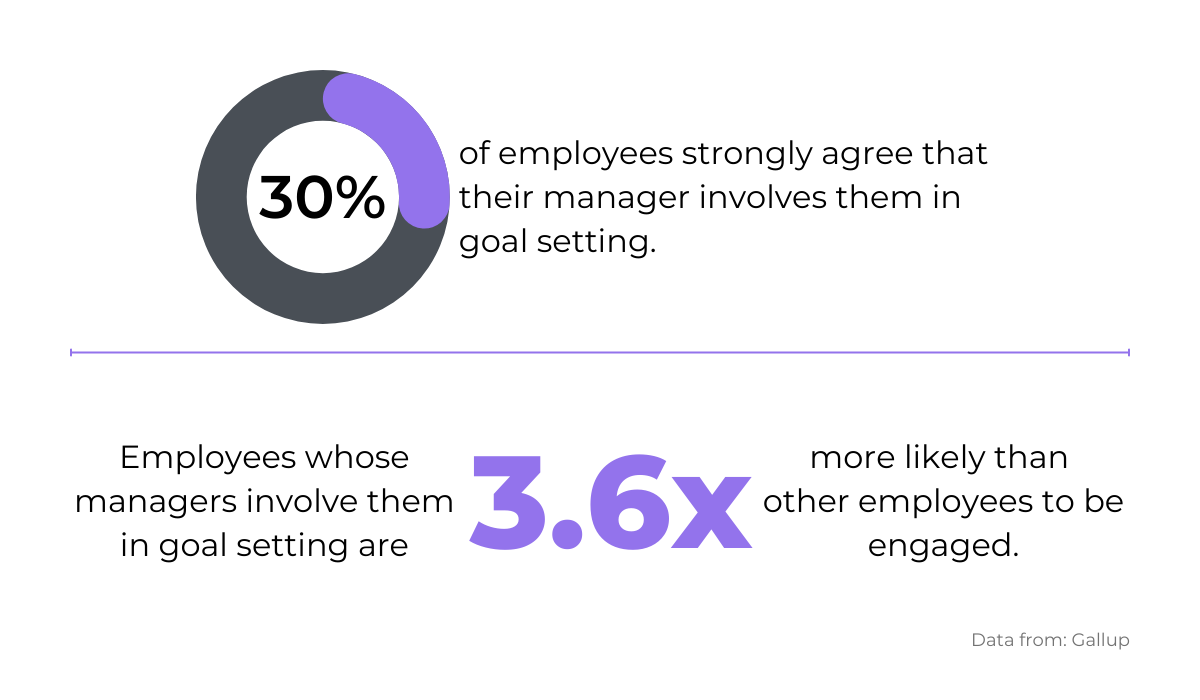
Less than a third of employees believe their manager helps them with goal setting. However, those lucky fellows with involved managers are more than three times as engaged as the others.
By working with your team members to identify improvement opportunities, your developers should automatically become much more engaged at work, increasing productivity.
If you want some help locating room for improvement, BetterWorks is a great tool to help you out.
A human capital management software, with this resource, you can create OKRs (objectives and key results) and personal goals for each employee. Here’s an example:

It was identified that customer support was needed on social media, and a chatbox was the best solution for the job.
However, this isn’t only an improvement for the end user but also for your developer. With this task, you’re helping them either polish their skills or learn entirely new ones.
Ask Them Questions
Although 1:1 meetings are great opportunities for you to connect with your employee, not every developer will want to open up right away.
Therefore, you must ask them questions to draw them out of their shell. This way, you encourage them to share everything on their mind.
Jason Lemkin, the founder of EchoSign, also commented on the importance of asking questions:
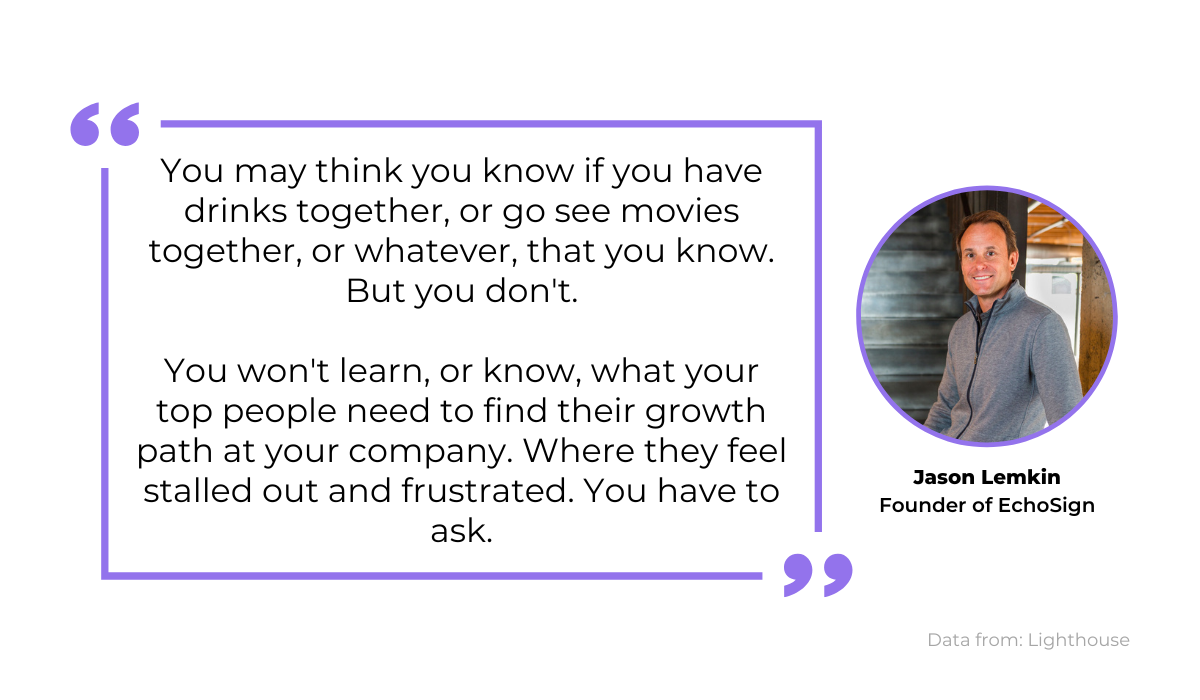
By asking your developer the correct inquiries, you should unearth their genuine feelings on a matter.
It’s also important to ask open-ended questions. Don’t limit yourself to bland, binary questions, but phrase the question in a way to incite discussion.
For example, avoid formulations such as ‘Do you feel comfortable with your current task?’. This inquiry can very quickly be answered with a simple yes or no, and no further details.

Capture, Annotate & Share in Seconds with our Free Chrome Extension!
Instead, ask your developer: ‘How are you feeling about your role/project?’
This open-ended question can’t be answered in one word and should incentivize your employee to elaborate. That way, you’ll find out more about their true thoughts and concerns.
Such questions are bound to make a difference, as Cooperrider and Whitney pointed out:
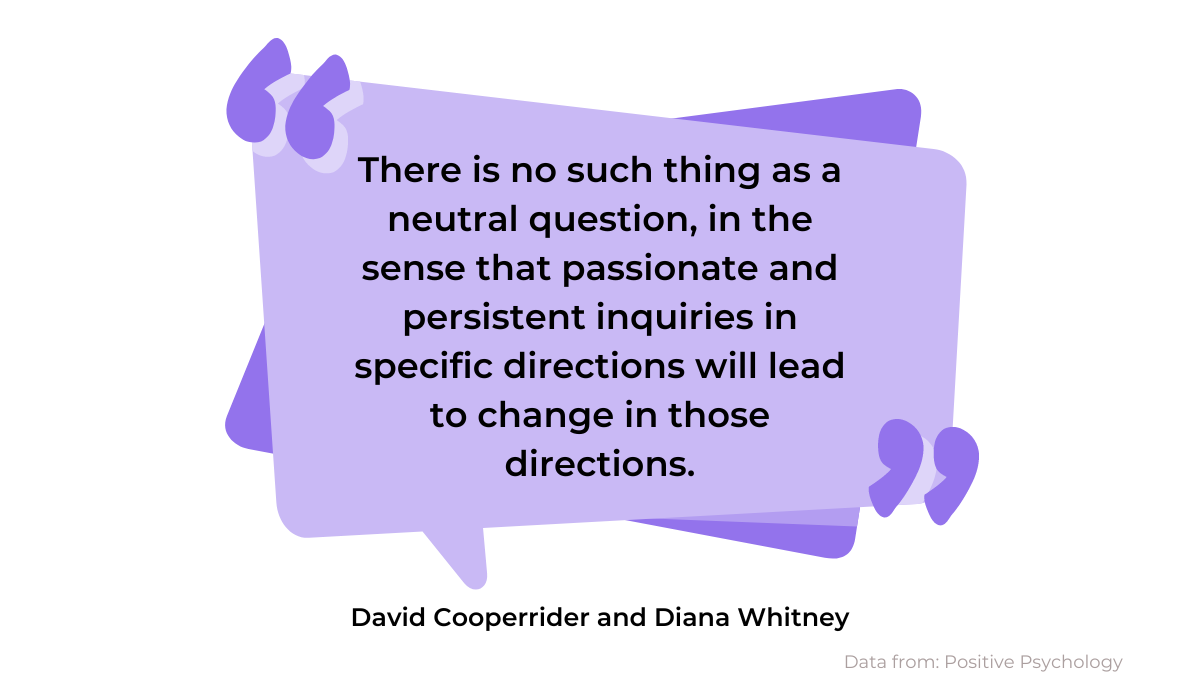
As long as you continue asking your developers questions and consistently nudge them in a specific direction, sooner or later, you’ll make a change.
Conclusion
A 1:1 meeting is an invaluable part of your job; it’s the most accessible tool you can leverage to get to the bottom of what’s on your developers’ minds.
In these meetings, you’ll have the perfect opportunity to give feedback, build trust, and discuss career development opportunities – all necessary components of managing a team.
Ensure you have a meeting agenda and allow enough time for the meeting. Start the session with a win, and spend some time pinpointing improvement opportunities.
Throughout the entire 1:1, consistently ask questions – that’s how you’ll get to know your developer best.
